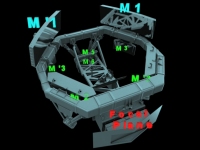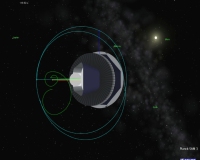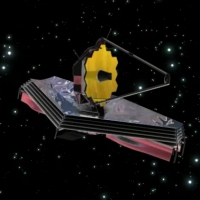ESA Science at Le Bourget
20 June 2007
This week, from 18 to 24 June, the 47th Paris Air Show is being held at Le Bourget. The event has again gathered many companies from the international air and space industry. ESA as well as a lot of the agency's industrial partners are also present and several important contracts and agreements have been signed for some of the space agency's missions that are in development.Contract for Development of Gaia Mirrors
 |
|
The Gaia optical bench |
EADS Astrium is the prime contractor to ESA for the building of the Gaia spacecraft. On Monday, 18 June 2007, at Le Bourget, Sagem Défense Sécurité (SAFRAN Group) signed a contract with EADS Astrium to produce Gaia's large mirrors that will be delivered in 2008.
Gaia, ESA's future astrometric mission currently scheduled for launch in 2011, is dedicated to the mapping of the billion brightest objects in the sky with as main goal to produce a three-dimensional map of our Galaxy with unprecedented accuracy.
To this end, Gaia will use two telescopes, each with a primary mirror that is 1.45 x 0.5 m in size. The mirrors and telescope structures will be built using ultra-stable silicon-carbide (SiC) material to provide low mass, isotropy, thermo-elastic stability and dimensional stability during the operational lifetime in space. The two mirrors will have to be polished to a precision of less than 10 nm.
Herschel/Planck AOCS Systems
 |
|
Planck during an attitude control manoeuvre. Credit: SENER |
Among the companies present at Le Bourget are SENER, a Spanish company and Dutch Space which is based in the Netherlands. Together they are responsible for designing, developing, integrating and testing the Attitude Orbit Control System (AOCS) of both the Planck and Herschel spacecraft. The AOCS is crucial to the two missions which are scheduled for a dual launch in 2008.
In Planck the system shall maintain the spacecraft's spinning axis direction always orientated near the anti-Sun vector, with a maximum deviation of +/- 10°. After launch, Planck is spin stabilised and will be put in a Lissajous orbit about the second Lagrange point L2 of the Earth-Sun system, from where the spacecraft payload will map the Cosmic Microwave Background across the whole sky.
For Herschel, high accuracy 3-axis pointing is achieved through operating 20 N thrusters and reaction wheels, based on the accurate attitude determination by autonomous star trackers and gyroscopes.
Agreements on JWST and LISA Pathfinder
 |
|
Artist's impression of JWST |
On Monday 18 June, two Memoranda of Understanding have been signed by ESA and NASA at Le Bourget that define the terms of the cooperation on the JWST mission and on the LISA Pathfinder mission.
Scheduled for launch in 2013 and generally seen as Hubble's direct successor, the James Webb Space Telescope (JWST) is a project of international collaboration between NASA, ESA and the Canadian Space Agency.
The LISA-Pathfinder mission is a crucial stepping stone toward the future ESA/NASA LISA mission that will detect and measure gravitational waves in space using multiple spacecraft flying in formation.
For the full ESA press release and details of the agreements, please see the related link "Signing of JWST and LISA Pathfinder agreements" in the right hand side navigation.


